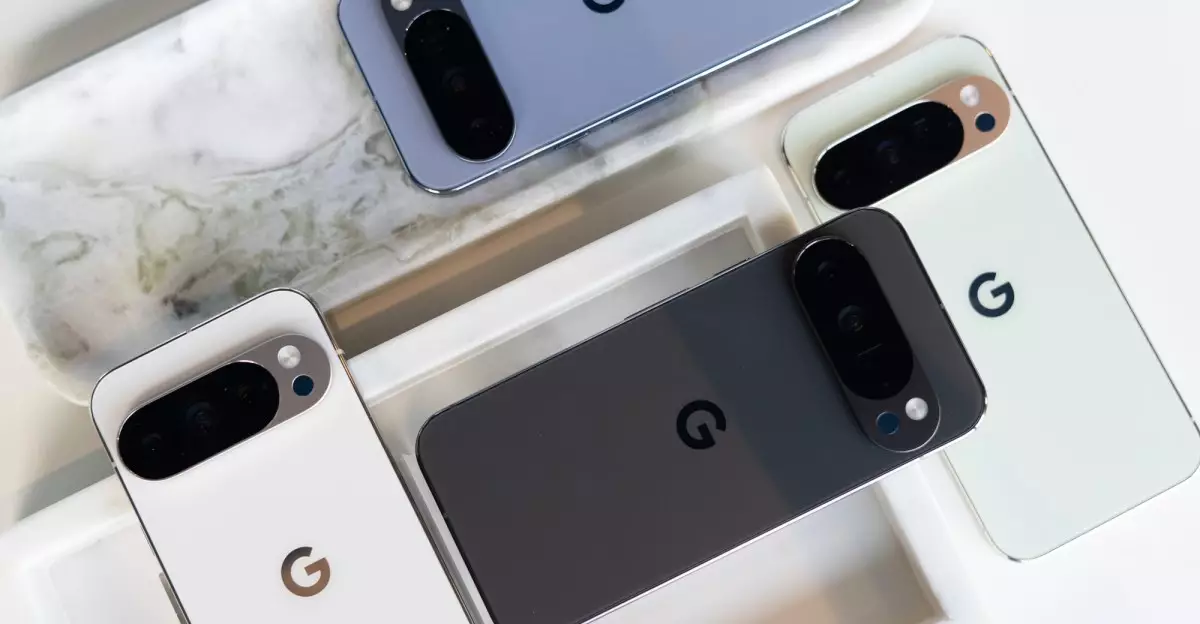The Google Pixel 10 signifies a pivotal moment in Google’s smartphone journey, blending familiar aesthetics with groundbreaking features. While it visually echoes the Pixel 9, Google’s strategic updates demonstrate an intent to redefine user interaction and device utility. The introduction of the MagSafe-like Pixelsnap system exemplifies this shift—an inventive upgrade that moves beyond mere hardware specs to reshape how users engage with their phones daily. This magnetic accessory ecosystem offers a seamless, intuitive experience that reduces friction in attaching wallets, stands, or portable batteries. It’s a move that urges consumers to think of their Pixel not just as a communication device but as an integrated hub that effortlessly adapts to their routines.
This focus on usability underscores a broader philosophy: smartphones should be extensions of our lives, not just tools we carry. Google’s design philosophy appears to emphasize convenience and adaptability, offering a device that becomes more personal and responsive over time. The simplicity of magnets combined with faster, more reliable attachment and detachment means less time fiddling and more time enjoying. For users tired of the clunky, often frustrating third-party accessories, this innovation could redefine how we think about compatibility and convenience. The Pixel 10’s design focus isn’t solely about aesthetics; it’s about creating a digital companion that aligns seamlessly with user needs.
Camera Capabilities: An Evolution with Clear Trade-offs
The Pixel series has long championed photography, and the Pixel 10 continues this legacy—albeit with some notable shifts. The leap to include a dedicated telephoto lens marks a significant upgrade, addressing a prominent criticism of the Pixel 9. This camera addition elevates the Pixel from a capable shooter to a versatile optical powerhouse, allowing for crisp, detailed shots of distant subjects without relying heavily on digital zoom. This is a strategic move, positioning the Pixel 10 as a more serious contender in mobile photography. For photographers and casual snappers alike, the presence of a telephoto lens enhances portrait framing, enhances landscape shots, and provides more creative options.
However, not all is an upgrade. The choice to reduce the sizes of the main and ultrawide sensors from the Pixel 9’s 50 MP and 48 MP to 48 MP and 13 MP, respectively, raises eyebrows. This apparent downgrade could suggest a compromise—either to accommodate the new telephoto lens or to improve internal processing efficiency. Google’s assertion that the Tensor G5 will compensate for these reductions by producing higher quality images introduces optimism but also warrants cautious optimism until real-world tests confirm performance parity with previous models. It’s a bold strategy—prioritizing innovative processing over sheer sensor size—highlighting Google’s confidence in its AI-driven image processing.
Processing Power and AI: The Future is Smarter
Perhaps the most compelling aspect of the Pixel 10 isn’t just hardware tweaks but the leaps in artificial intelligence and processing capabilities. Armed with the Tensor G5 chip, Google amplifies its commitment to AI-driven features, promising smarter, more predictive interactions. The Magic Cue—an AI-powered proactive assistant—aims to preempt user needs, offering a glimpse into a future where smartphones become intuitive, proactive entities rather than reactive tools.
This emphasis on AI isn’t merely a feature—it’s the foundation upon which Google is building the future of smartphones. The Pixel 10 is positioned to be more than just a communication device; it’s a personal assistant, a productivity booster, and a creative partner. Faster processing, smarter image enhancement, and context-aware suggestions will fundamentally alter user expectations. Instead of reacting to commands, the Pixel 10 aspires to anticipate, streamline, and elevate user experience—making it a device that understands you better than ever before.
Price and Positioning: The Sleeper Hit in Google’s Portfolio
One of the most intriguing facets of the Pixel 10 lineup is its pricing and positioning. Starting at $799, the base model undercuts the premium flagship market while offering features that rival or surpass more expensive phones with larger price tags. The addition of features like a telephoto lens and the innovative Pixelsnap system indicates Google’s confidence in delivering a compelling package without the hefty cost traditionally associated with flagship devices.
This strategic positioning suggests Google is aiming to disrupt the high-end market spectrum, tempting consumers who demand premium features but are wary of overspending. The Pixel 10’s value proposition might not only attract dedicated Android enthusiasts but also appeal to a broader audience seeking a balanced combination of innovation, affordability, and reliability. If Google continues to refine its AI prowess and hardware ecosystem, the Pixel 10 could very well reshape the competitive landscape of flagship smartphones.
—
Google’s Pixel 10 isn’t merely an iterative upgrade—it’s a statement of intent. By thoughtfully integrating innovative accessories, advancing camera technology, and leveraging cutting-edge AI, Google is positioning its latest flagship as a transformative device designed for modern, tech-savvy users eager for smarter, more adaptable technology. Whether this bold move will fundamentally alter user expectations remains to be seen, but one thing is clear: Google isn’t just following trends; it’s setting its own that could revolutionize what we expect from modern smartphones.

